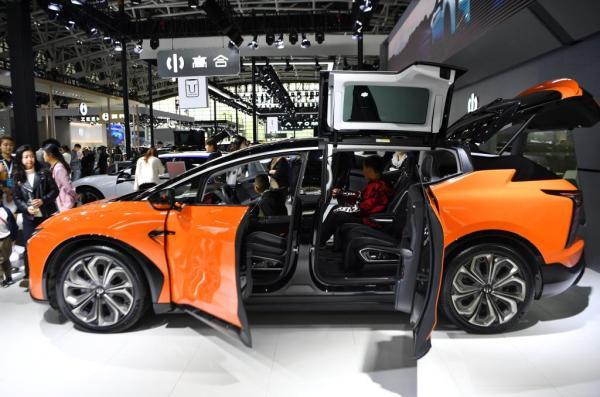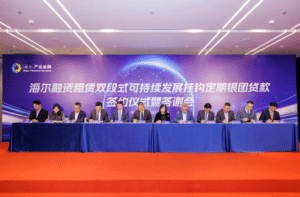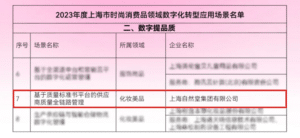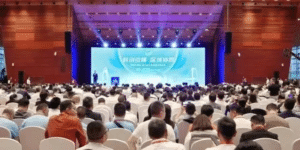China VIB emission standard is fully implemented in the automobile industry or what changes will be embraced

[ad_1]
The Ministry of Ecology and Environment, the Ministry of Industry and Information Technology and other departments recently jointly issued an announcement that from July 1, 2023, the National Sixth Emission Standard Stage 6b will be fully implemented nationwide, and the production, import, and sale of vehicles that do not meet the National Sixth Emission Standard Stage 6b will be prohibited.
The “boots” of the emission standard policy will accelerate the promotion of the automobile industry into a new stage of green development. What changes will the full implementation of China VI b bring to the auto market? Will the fuel vehicle market usher in a “price cut tide”? Will it accelerate the promotion of new energy vehicles?
“National Six b” car market accounts for more than 90%, and the industry has entered a new stage
The “National Sixth Standard” is a standard formulated to prevent and control motor vehicle pollution emissions and improve ambient air quality. The “National VI Standard” for light vehicles sets two emission limit schemes, namely National VI a and National VI b, which will be implemented in 2020 and 2023 respectively.
China VI b is about to be fully implemented, but the preparations for the market and industry are not limited to the present.
“Since the release of the ‘National VI Standard’, most enterprises have directly carried out product development and production in accordance with the requirements of the National VI b standard. The industry is equivalent to implementing the National VI b standard ahead of schedule, and the National VI b vehicle occupies a major market share.” China Association of Automobile Manufacturers The relevant person in charge said that many models have already completed the transition to China VI b, and from the perspective of enterprise production, there is no technical difficulty. It is understood that since the implementation of the standard, light vehicle National VI b models account for more than 95%, and the National VI b vehicle market accounts for more than 90%.
GAC Group stated that all its fuel-fueled models have switched to the National VI-b standard; Changan Automobile also stated that it has no pressure on the arrival of the National VI-b, and the newly launched Yida and other products meet the National VI-b standard…Facing the implementation of the standard , manufacturers get ready.
The reporter interviewed a number of industry experts and said that from the perspective of the new car market, the implementation of China VI b will not have a big impact on the auto market. The National VI b standard has been promoted in advance in first-tier cities such as Beijing and Shanghai, and the implementation of the new regulations has little impact on the auto market in these cities. In other cities that have not yet implemented the National VI b standard, if there are relatively more National VI a vehicles in stock, there will be a certain price drop in the short term, but this is what will be experienced every time the emission standard is switched. The green and low-carbon development trend of the auto industry itself is a reflection of market demand, and will also accelerate the transformation of auto companies and the industry.
The half-year sales transition period promotes the smooth continuation of the market
The release of the National VI emission standards has given the market a longer adjustment window period. The early implementation of standards in key areas will help ease the pressure on the industry when the policy is officially implemented.
At the same time, the announcement made it clear that a half-year sales transition period will be given for some light-duty vehicle National VI b models such as the actual driving pollutant emission test (that is, the RDE test) whose report results are “monitoring only”, and sales are allowed until December 31, 2023 . This move also allows manufacturers and dealers to plan their layout reasonably and complete product switching and sales as soon as possible.
The reporter learned from the China Association of Automobile Manufacturers that the China Association of Automobile Manufacturers has established an inventory scheduling mechanism with member units such as the top ten vehicle groups, and organizes and schedules industry inventory data on a monthly basis. As of the end of January 2023, there are more than 1.89 million vehicles in stock that do not meet RDE requirements.
The person in charge of the China Association of Automobile Manufacturers believes that this round of inventory pressure is caused by objective factors. Among them, there are not only the influence of “demand contraction, supply shock, and weaker expectations” in the auto market, but also factors such as the need for a certain period of time for product production switching, and the accelerated replacement of traditional fuel vehicles by new energy vehicles. After many months of promotions, the inventory has dropped significantly.
“The policy gives a half-year sales transition period, which is conducive to stabilizing the mentality of dealers and enterprises, orderly destocking, and helping the smooth transition of the auto market.” said Cui Dongshu, secretary-general of the National Passenger Car Market Information Association.
Accelerate the orientation of green intelligence and promote the iterative upgrading of the industry
Industry insiders believe that the full implementation of China VI-b emission standards will play a positive role in promoting the iterative upgrade of the fuel vehicle market and the new energy vehicle market.
On April 29, the audience experienced new energy vehicles at the 15th Xi’an May 1st Auto Show in 2023.
Recently, the executive meeting of the State Council deployed to accelerate the construction of charging infrastructure. The National Development and Reform Commission and the National Energy Administration issued the “Implementation Opinions on Accelerating the Construction of Charging Infrastructure to Better Support New Energy Vehicles Going to the Countryside and Rural Revitalization.” A series of policies to encourage automobile consumption, especially to support the consumption of new energy vehicles, has been launched to promote the industry to accelerate the upgrade to green and intelligent.
With industry orientation and policy support, car companies are speeding up deployment, and the market is constantly exploring model innovation: Chery recently announced preferential measures for going to the countryside, and its “QQ Ice Cream” went to the countryside to launch a 1,000 yuan/unit car purchase subsidy; charging service provider Energy Chain Zhidian vigorously Promote the penetration of business in rural areas, forming a charging service network covering 55,000 stations and 575,000 charging guns across the country; Hangzhou Longyuan Electric Power Co., Ltd. and relevant units jointly formulate the optimal power supply plan for charging stations, and use digital technology to monitor the working status and charging points of charging piles. Charging protection system for real-time monitoring…
The proportion of new energy vehicles for freight transportation continues to increase, accelerating the market promotion of new energy vehicles. Take Huolala as an example. In October last year, the proportion of new energy truck drivers on the platform reached 25%. According to the prospectus of Huolala, as of the end of last year, Huolala had more than 35,000 electric vehicle charging stations in more than 270 cities in China.
“Industrial upgrading is the general trend.” Xu Haidong, deputy chief engineer of the China Association of Automobile Manufacturers, believes that whether it is the implementation of emission standards or the introduction of consumption promotion policies, it will further drive the green transformation of the entire auto industry and accelerate the promotion and application of new energy vehicles. The next step is to do a good job in policy implementation and continue to improve the overall competitiveness and development quality of the auto industry.
[ad_2]
Source link







